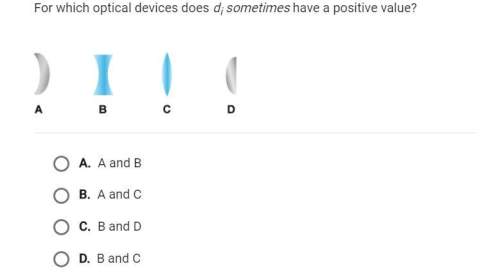
Physics, 05.10.2019 07:20, michellemonroe012305
Abox slides on an inclined plane (=40°) that has friction (=0.43) which causes the box to slide with a constant velocity of 3 m/s. the box reaches the bottom and continues to slide across a horizontal surface with friction (=0.34) until coming to rest five meters from the base of the ramp. what is the length of the ramp that the box slid down?
the answer is that the length of the ramp is 4m, but i don't see how to get there. since the box is sliding down the ramp at a constant speed, there is no net force acting on the box, which means the net work done on the ramp is zero. the energy the box has at the bottom of the ramp doesn't equal the work done to travel 5 meters from the bottom of the ramp.
?

Answers: 3
Other questions on the subject: Physics


Physics, 22.06.2019 12:00, P4thing
Under the action of a constant force an object accelerates at 7.8 m/s2. what will the acceleration be if (a) the force is halved? (b) the object's mass is halved? (c) the force and the object's mass are both halved? (d) the force is halved and the object's mass is doubled?
Answers: 3

Physics, 22.06.2019 23:40, itzdulce
To place a communications satellite into a geosynchronous orbit at an altitude of 22,240 mi above the surface of the earth, the satellite first is released from a space shuttle , which is in a circular orbit at an altitude of 185 mi, and then is propelled by an upper-stage booster to its final altitude. as the satellite passes through a, the booster's motor is fired to insert the satellite into an elliptic transfer orbit. the booster is again fired at b to insert the satellite into a geosynchronous orbit. knowing that the second firing increases the speed of the satellite by 4810ft/s, determine (a.) the speed of the satellite as it approaches b on the elliptic transfer orbit, (b.) the increase in speed resulting from the first firing at a.
Answers: 2

Physics, 23.06.2019 07:30, yeomans410
An electron and a proton are held on an x axis, with the electron at x = + 1.000 m and the proton at x = - 1.000 m. part a how much work is required to bring an additional electron from infinity to the origin? express your answer with the appropriate units. part b if, instead of the second electron coming in from infinity, it is initially at x = + 20.00 m on the axis and is given an initial velocity of 100.0 m/s toward the origin, does it reach the origin? part c how close to the origin does it come?
Answers: 3
Do you know the correct answer?
Abox slides on an inclined plane (=40°) that has friction (=0.43) which causes the box to slide with...
Questions in other subjects:





Geography, 16.06.2021 23:40

Mathematics, 16.06.2021 23:40


Mathematics, 16.06.2021 23:40


Mathematics, 16.06.2021 23:40







